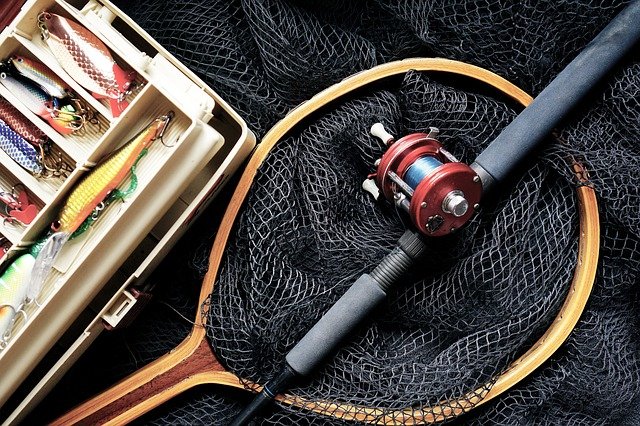Whether you’re a novice or seasoned pro, having the right fishing equipment is always important to give you an edge in competition or just to make life easier on a lazy morning.  While to the untrained eye all fishing rods and reels seem similar, any keen angler knows that using specific equipment for the environment and task at hand will improve performance with ease. A fishing hand reel is a handcrafted fishing kit that combines a rod, reel, and tackle box into one ultralight package. In addition, you may discover outdoor products by Everest, and find there a range of innovative designs and products for an enhanced fishing experience.
While to the untrained eye all fishing rods and reels seem similar, any keen angler knows that using specific equipment for the environment and task at hand will improve performance with ease. A fishing hand reel is a handcrafted fishing kit that combines a rod, reel, and tackle box into one ultralight package. In addition, you may discover outdoor products by Everest, and find there a range of innovative designs and products for an enhanced fishing experience.
Here, we’ll guide you through the different types of fishing reels that are commonly used and what makes each unique.
Spinning Reels
Spinning reels are what most people will commonly see as a standard choice and they are still the most popular type of reel globally. Thanks to their dependability, spinning reels are great for general use and are highly versatile in different scenarios. Characteristically they have a fixed-spool which is different to other fishing reels. As the spool doesn’t rotate, the bail arm goes around the spool instead to retrieve the line, wrapping onto it. This type of fishing reel helps to cast lightweight lures and baits and are a reliable alternative to baitcasting reels that will struggle to do so. Spinning reels can be easier for the angler to handle making them more convenient in many scenarios.
Spin Casting reels
Thanks to their compact size, spin casting reels have a closed spool cover and have a button release mechanism to cast the line. As they are user-friendly, they are a great option for novices including children when starting out. First introduced back in the mid-20th Century for commercial use, the design solved many of the complications that anglers would need to consider, opting for a top-mounted button release and able to cast lightweight lures and baits with ease. As they are smaller, they are restricted by line capacity, so they are not ideal when you need to cast longer distances or when fishing at depth. Anything bigger than a small fish and the spin cast reel will struggle, so it is an ideal choice when starting out.
Baitcasting reels
Also known as revolving-spool reels, baitcasting reels are an advanced choice when looking to cast over a longer distance with improved accuracy. The design of baitcasting reels means the spool rotates as the line is released so it doesn’t twist like with spinning reels. They are available in many different sizes so experienced anglers can choose the right type for saltwater to freshwater, and experience does come in handy when using this type of reel. They aren’t ideal for novices as the line can unreel faster and are not suitable for light lures, while the technique to use them needs practice. Baitcasting reels are also more expensive than other types of reels so it’s best for those looking to upgrade their experience and performance when bass fishing or going after more powerful fish.
Fly reels
Designed for using artificial, lightweight fly lures, a fly reel looks simple in its construction and size. They can be purchased in different strengths and sizes depending on the type of fish an angler is going for. Saltwater fly reels are ideal for ocean environments catching mackerel, for example, while freshwater fly reels can be used for salmon. They use a single spool on a center pin which it revolves around and are ideal for thick fly fishing lines, required due to the lures being extremely lightweight so that they can still be cast. The technique of casting using fly reels also differs and while versatile may be best for experienced anglers.
While these are the main types of fishing reels available, there are subcategories for more specific use and variations of each. It’s recommended to match the reel with the type of species and fishing environment you’re interested in, then compare reels for one that works best for your skill level.
Related Posts: